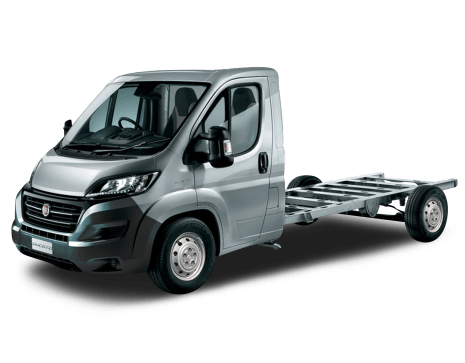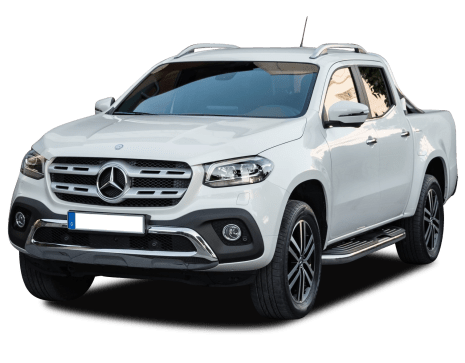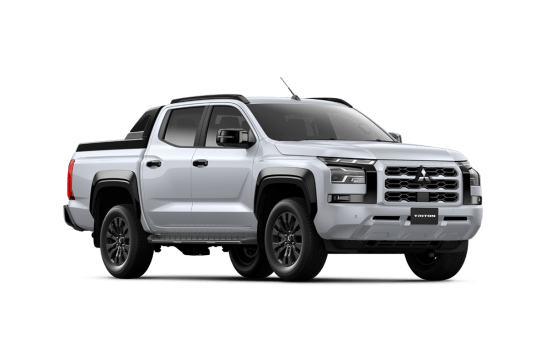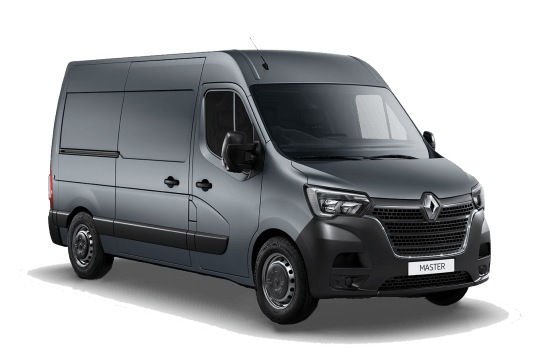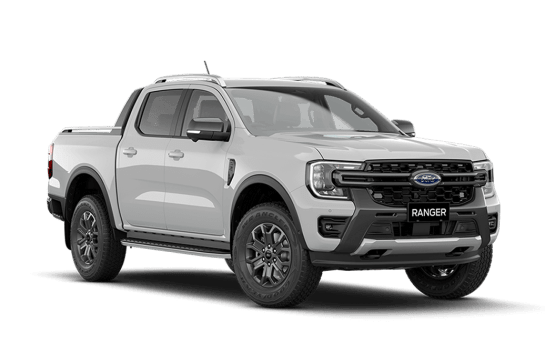
Ford Ranger VS Citroen Berlingo
Ford Ranger
Likes
- Doesn’t lose dual-cab ability
- Refined driving and interior
- Makes off-roading easy
Dislikes
- Prohibitively expensive
- Lacks truly usable EV range
- Adds weight to already-heavy ute
Citroen Berlingo
Likes
Dislikes
Summary
Ford Ranger
Ford has been teasing the plug-in version of its sales chart darling for some time.
Long enough, in fact, that between the Ford Ranger PHEV program being confirmed in late 2023 and its 2025 arrival, two other plug-in hybrid utes have hit the market.
While there’s some overlap between the aims and target market of the Ranger PHEV and its challengers from China, the BYD Shark 6 and the GWM Cannon Alpha PHEV, Ford claims the Ranger’s capability hasn’t been compromised for the sake of electrification.
Read more about
- 2026 Ford Ranger will break new ground and move beyond established rivals the Toyota HiLux, BYD Shark 6, Nissan Navara and Mitsubishi Triton
- Ford Territory lives on! And so does the Escape and Puma. Bring them back to Australia along with the Explorer to help Ranger and Everest in the fight against the 2025 Toyota LandCruiser, Nissan Patrol, Kia Sorento and Toyota RAV4 | Opinion
- Ford could bring back famous axed car: Tie-up with Volkswagen could lead to the return of iconic hatchback as an electric car: Reports
Can a petrol engine and a big battery bring the same tough ute vibes as the rugged diesel variant that’s arguably become the segment benchmark?
There’s a lot riding on the Ranger PHEV and Ford Australia invited CarsGuide to the updated ute's local launch, including a variety of situations you might expect a dual-cab to be found in - on and off the asphalt.
| Safety rating | |
|---|---|
| Engine Type | 2.3L turbo |
| Fuel Type | — |
| Fuel Efficiency | 2.7L/100km |
| Seating | 5 seats |
Citroen Berlingo
Citroen, the famous French manufacturer founded in 1919, has achieved global acclaim for daringly bold and brilliant design and engineering that was often ahead of its time.
Despite this, the double chevron badge has suffered a tumultuous ride since the 1970s, including a lifesaving merger with Peugeot in 1976, followed by another near-death experience for Peugeot-Citroen (PSA Group) in 2012.
Since then, though, major restructuring has seen a remarkable turnaround. Under Inchcape Australasia, which took over PSA’s local distribution in 2017, Peugeot Citroen Australia has a fresh focus on light commercial vehicles, with the venerable Citroen Berlingo holding centre stage with its class-leading payload capacity.
Even so, with less than seven per cent of the local small van segment (under 2.5 tonne GVM), the Berlingo’s market share is dwarfed by French rival Renault’s Kangoo, with 25 per cent, and VW’s kick-butt Caddy, which now commands more than 65 per cent.
However, with an all-new Berlingo range just around the corner and super deals being done with the current model in run-out mode, we put one to work for a week to see if it would be worth a trip to your local Citroen dealer to bag a bargain.
| Safety rating | |
|---|---|
| Engine Type | 1.6L |
| Fuel Type | Premium Unleaded Petrol |
| Fuel Efficiency | 7.1L/100km |
| Seating | 2 seats |
Verdict
Ford Ranger7.6/10
The Ford Ranger is a strong starting point for a plug-in hybrid upgrade. And there are valid pros accompanying the addition of a high-voltage battery. But those benefits aren’t primarily seen on the road.
In fact, given its higher price, the Ranger PHEV loses out when compared to its BYD and GWM rivals, which offer more features and a far higher EV range at lower prices.
The Ranger doesn’t compromise its ‘ute-ness’ as its rivals do in different ways. But its target audience is likely relatively small. One that's willing to fork out for a capable, comfortable ute that can power a campsite or run tools on the job.
If you want an EV that just looks like a ute, this isn’t it. But if you're after a dual cab that can do proper ute things, with a bonus when it comes to efficiency and convenience, you’ll need deep pockets.
Note: CarsGuide attended this event as a guest of the manufacturer, with accommodation and meals provided.
Citroen Berlingo8.3/10
Given Citroen’s proud heritage of innovation, the Berlingo has a few unique and quirky features, but is overall quite conventional in its design and performance (though in a well thought-out and practical package).
With sub-$20K run-out pricing, it should have plenty of appeal for commercial customers, as it costs much less than its major rivals yet offers a superior payload.
Is the Berlingo a small van leader or follower? Tell us what you think in the comments section below.
Design
Ford Ranger
The Ford Ranger is still one of the best-looking utes available, with a strong brand identity and a lack of design features that lean into trends - perhaps aside from the ‘C-shaped’ DRL signature.
There are only a few hints that any given Ranger you might be looking at is a plug-in hybrid, with the vehicle’s panels and general design features looking primarily the same.
The most obvious change is fender badging that outs the Ranger as a ‘PHEV’, though its lettering isn’t too ‘shouty’.
But to those more familiar with the Ranger, or anyone able to have a proper look around a PHEV, there are a couple of other giveaways.
For example, the Ranger plug-in has a new set of wheel designs that range from the 17-inch alloys on the XLT to the Stormtrak-specific 18s featuring 'Chill Grey' inserts as trim accents.
The Stormtrak can also be had in Chill Grey, the colour being exclusive to that variant along with the aforementioned unique trim design.
There are also plug outlets in the ute’s tub for access to the Ranger’s battery power. Harder to spot if you’re looking at one of the higher-spec variants that feature a roller cover.
Inside, it’s a similar story with the PHEV’s interior being standard Ranger fare aside from the button that controls its EV modes.
Citroen Berlingo
The smallest Berlingo rides on a front-wheel-drive, 2728mm wheelbase with an overall length of 4380mm and width of 1810mm. Compared to the Caddy, the Berlingo is 46mm longer in wheelbase, 28mm shorter and 37mm wider.
Suspension features MacPherson struts up front and a tidy trailing arm arrangement at the rear, which is well designed for carrying heavy loads. Steering is via power-assisted rack and pinion and four-wheel disc brakes provide reassuringly strong braking. The turning circle is a compact 11.0 metres.
The cabin and cargo bay are separated by a removable grey vinyl screen, with a large clear section in the upper half to allow rear vision for the driver. Citroen says this screen is primarily to reduce air-conditioning requirements, which in turn reduces the A/C load on the engine to optimise performance and fuel economy.
It’s also claimed to (slightly) reduce noise intrusion from the cargo bay, which is mostly caused by tyre roar through the rear wheel arches. However, Citroen has taken a commendable step in trying to muffle these noise paths by surrounding each wheel arch with large plastic mouldings which are claimed to contain sound-absorbing material.
Glazed rear barn doors with wiper/washer and 180-degree opening, plus solid sliding side doors, are standard issue. The barn doors also feature an asymmetrical design (one wide, one narrow) to off-set the centre pillars and reduce the large blind spot they create in the rear-view mirror.
The cabin layout is simple and functional with decent-sized door mirrors, although the kerb side would benefit from a wide-angle lens due to a big blind spot for the driver created by the solid side door. The fold-down inboard arm-rest is a nice touch and the cabin is quite spacious, although tall drivers will find the left footrest too high for a comfortable leg position.
Practicality
Ford Ranger
The Ford Ranger’s interior is impressive for a dual-cab ute when it comes to layout and functionality.
A large 12-inch touchscreen dominates the central space on the dash, but there are still physical controls for the climate settings and the screen has shortcuts to main functions thanks to Ford’s 'Sync' software.
A big 12.4-inch driver display is similarly handy, being clear in its layout and able to be customised to the extent you’d expect from a modern bit of kit.
As mentioned, in the XLT you miss out on a few goodies, but the phone charger found in other variants is placed out of the way, under the screen and behind the gear shift.
Cupholders are similarly out of the way of any buttons or controls, and the gear-shifter itself is mercifully a traditional one rather than a dial or buttons.
With everything in an ergonomically sensible place, it’s similarly comforting that the seats and the steering wheel can be adjusted to find a suitable position.
It’s still a dual-cab ute, so don’t anticipate ‘melt-into-the-seat’ levels of comfort, but the space on offer in the front and rear seats is enough for an adult to feel at ease on even a long trip.
Behind the cabin, there’s space for two euro pallets according to Ford, with a payload as high as 973kg for the XLT. The Stormtrak’s 808kg payload is the lowest of the bunch, with Sport (934kg) and Wildtrak (885kg) slotting in between.
There’s a spare tyre underneath the tub and the ability to tow a 3500kg braked trailer - all combining to make it the most functional workhorse on offer in the plug-in hybrid ute segment. The GWM Cannon Alpha PHEV can tow 3.5-tonne and the BYD Shark 6’s payload is okay, but neither can do it all.
That said, the Ranger falls short in the plug-in game, which we’ll get to shortly.
Citroen Berlingo
The Berlingo’s 1433kg kerb weight and 2150kg GVM would normally result in a 717kg payload. However, Citroen’s official payload figure is 133kg higher, at a class-leading 850kg, because PSA calculates kerb weights differently to the norm (typically French). So, 75kg of that can be carried on the roof when shared across three racks with the mounting points provided.
Its robust 3250kg GCM allows up to 1100kg of braked trailer to be towed without any reduction in payload. Citroen states that this GCM applies up to a maximum altitude of 1000 metres above sea level, with a 10 per cent reduction for each additional 1000 metres. So keep those stats in mind if you’re heading for Mount Kosciuszko.
The cargo bay, which offers 3.3 cubic metres of load volume (or 3.7 with passenger sear folded), has a floor length of 1800mm and a roomy 1229mm between the wheel arches. This means it can carry one 1160mm-square standard Aussie pallet, easily loaded with a forklift through the rear barn doors and held in place by six tie-down points. There’s also internal lighting, a 12-volt outlet and sturdy ladder-frame cargo barrier behind the driver. Nothing for the passenger, though.
Cabin storage options include two pockets and a combined cup/bottle holder in each door. There’s also a large lidded compartment and two open bins set into the dash-top, two circular storage slots in the centre display plus two smaller pockets below and beside the gearstick; the latter a slim-line 'holster' complete with USB port.
The single glovebox has two-tier storage, and there’s a full-width cabin shelf overhead. The centre console, which is a module that can be unlocked and removed if you want floor space between the seats, has a cup holder at the front, a big internal storage area with sliding lid in the centre and two cup/small bottle holders at the rear. There’s also lots of vacant space for additional storage under both seats.
Price and features
Ford Ranger
The Ford Ranger PHEV is not cheap. While rivals kick off in the $50,000-bracket, the entry-level Ranger PHEV XLT starts from $71,990, before on-road costs.
The range tops out at $86,990 for the PHEV Stormtrak, which is approaching Raptor territory.
For reference, the BYD Shark starts at $57,990, while the GWM Cannon Alpha PHEV kicks off from $59,990.
The standard features list for the Ranger PHEV is pretty slim when it comes to interior mod-cons. The base model even makes do with halogen headlights as opposed to more commonly standard LEDs.
With cloth seats, no phone charger pad, manual adjust seats and even a more rudimental cruise control system than the rest of the range, more than $70,000 is a big ask.
The Ranger Sport adds some quite useful features and is only $4000 more, at $75,990.
LED headlights and DRLs, a sports bar and 18-inch alloys to replace the XLT’s 17s are visual clues, while inside there’s leather-accented seats, heated for the front row and the driver’s is electrically adjustable. Plus a wireless phone charger ups the tech on offer.
The $79,990 PHEV Wildtrak adds matrix LED headlights with auto-levelling and auto high beam, some unique trim including a different grille and a sail plane, as well as a roller shutter over the ute’s tub.
For more comfy vibes inside there’s ambient lighting, Wildtrak-specific leather seats with electric adjustment for the driver and front passenger and a premium 10-speaker sound system.
It also adds surround view parking cameras and Ford’s trailer assist system.
Finally, the top-of-the-range Stormtrak slots in at a relatively steep $86,990.
It gains a unique grille design, and other exclusive styling cues including specific wheels. But it’s the rack and cargo systems and auxiliary switches that owners will likely find handy.
Citroen Berlingo
The Citroen Berlingo range comprises three models; the L1 Short Body Manual, L2 Long Body Manual and L2 Long Body Semi-Automatic.
Our test vehicle was the L1 Short Body Manual (aka M Confort VTi), which, with a 1.6-litre petrol engine and five-speed manual gearbox, is normally $22,990. This compares favourably with the Kangoo L1 SWB (1.2-litre petrol/six-speed manual) at $23,990, and is a huge 24 per cent saving over the Caddy TSI220 SWB (1.4-litre petrol/seven-speed dual-clutch auto) at $30,390.
However, the Berlingo’s run-out price is now a bargain basement $19,990 drive-away, so you’ll save even more up front, plus be eligible for an immediate tax deduction if you're a business owner.
Given it’s a commercial van, our Berlingo came with all the usual visual cues of a hard worker, like the solid white body colour with contrasting black bumpers, door mirrors, handles and side rubbing strips, plus black hub caps inside 15-inch steel wheels with 195/65 R15 Michelin tyres and a matching spare. However, the cabin does at least get floor carpet.
Its standard equipment list includes useful stuff like a rear-view camera and rear parking sensors (essential in any van with solid side doors), guide-me-home headlights, height/reach adjustable steering wheel, RDS stereo sound system with a 7.0-inch touchscreen and multiple connectivity options (including Apple CarPlay, Android Auto and Bluetooth), cruise control with adjustable speed limiter, one-touch electric front windows and more.
Under the bonnet
Ford Ranger
The Ranger PHEV remains an off-road-capable 4x4 ute, with all four wheels receiving power. But the drivetrain is not your standard Ranger gear.
Ford’s 2.3-litre turbo-petrol four-cylinder 'EcoBoost' engine does the heavy lifting, aided by an electric motor mounted between it and the transmission.
The engine isn’t unproven in the ute game. In fact, it’s found in some variants of the current-gen Ranger’s cousin, the Volkswagen Amarok.
In the Ranger PHEV, it makes 138kW and 411Nm which, paired with the 75kW electric motor, contributes to a total 207kW and 697Nm output, transferred to all four wheels via Ford’s 10-speed automatic transmission.
Of course, the ute’s 4WD system is able to be set to '2H', '4A', '4H' or '4L' and has a rear diff-lock to assist in traversing tricky terrain.
Citroen Berlingo
The Euro 6-compliant 1.6-litre multi-point fuel-injected four-cylinder petrol engine is conspicuously rev-happy for a commercial vehicle, as evidenced by its tachometer which displays rpm increments all the way up to 7000rpm - with no redline.
The needle has to reach 6000rpm to access the engine’s relatively modest maximum power of 72kW (less than Kangoo/Caddy, which are both turbos), with peak torque of 152Nm (also less) at a relatively high 3500rpm. It also requires 95-octane fuel.
The five-speed manual gearbox has useful spread of ratios for both city/suburban delivery work and load hauling on the highway.
Efficiency
Ford Ranger
Ford claims the Ranger PHEV sips 2.9L/100km according to NEDC testing, but like many plug-in hybrids that would be difficult to achieve without constantly stopping to charge.
It’s also only able to charge the 11.8kWh lithium-ion battery at a 3.5kW rate under AC power and it takes around four hours to do so. There’s no DC fast charging.
It’s got a 70-litre fuel tank, and requires minimum 91 RON petrol.
During the launch drive, the highest figure reasonable driving produced in terms of a fuel consumption on the trip computer was 9.6L/100km during battery charging.
So, while theoretical range is around 2400km, that closer to real-world number reduces the distance between fills to a still useful 730km.
Ford didn’t offer an expected general consumption figure for ‘low-power’ driving - i.e. while the battery isn’t being actively charged but also isn’t carrying enough juice to fully propel the ute.
Citroen Berlingo
Our Berlingo achieved a combined figure of 7.2L/100km over a distance of 422km on a variety of roads and with different loads, including near-maximum GVM. Impressively, that was line-ball with the official combined figure of 7.1. With its 60-litre tank, you could expect a realistic driving range of 580-600km.
Driving
Ford Ranger
During a presentation and Q&A to media before the launch drive program, the Ford Australia team was keen to spruik how handy the PHEV’s battery would be for things like powering worksite equipment or for use during camping trips.
Alternately, focus on how the battery might come into play while on the road was modest. And behind the wheel it became clear why.
On-paper, the 49km electric driving range seems handy, but the NEDC testing which produced that figure is known for being optimistic.
On top of that, the launch program's highway driving wasn’t prime EV territory. In fact, we were encouraged to keep the cars in ‘charge’ mode to leave enough electric power in reserve to experience the Ranger PHEV’s off-road capabilities.
As mentioned, fuel consumption doesn’t exactly skyrocket even while the engine is charging the battery, but to make the most of the Ranger’s EV range you’d want to have a relatively short commute.
In terms of its on-road manners, the Ranger’s status as a benchmark for the category means even with the extra weight of the battery, the PHEV performs well.
Its 75kW EV output means driving under the electric motor’s power alone is reserved for low speed, but it does well to boost the torque provided by the engine. While it’s no sports car, it doesn’t feel sluggish.
The Ranger’s suspension does well to balance relative softness when it comes to bumps and rough surfaces without feeling like it doesn’t have the ute's weight under control.
If you want the best on-road driving experience from a Ranger, a V6-powered variant will provide the balance of comfort and power you seek.
Off-road, the PHEV’s capability is likely more than enough for most weekend warriors.
The electrified ute’s ability to use battery and engine to carefully cover terrain that would likely intimidate any off-road beginner is impressive. But we'll wait until we can get the Ranger PHEV onto home turf for a proper off-highway test before making a definitive judgement.
Citroen Berlingo
The first thing we noticed was the relatively low cargo-bay noise, combined with low wind and engine noise. The ride quality was firm but acceptable without a load, and the steering responsive and linear in weight, with a strong self-centering effect ensuring good directional stability.
The slick-shifting manual gearshift was nice to use, with well-defined gates and a light clutch action. Braking response was strong, but four discs designed to cope with a 3250kg GCM could bite hard if you pressed too firmly without a load.
With maximum torque at 3500rpm and peak power at 6000rpm, the 1.6-litre non-turbo engine responded best around town when kept revving freely between those two numbers. Although torque started to fall away sharply below 1800rpm, a useful amount remained between 1800-3500rpm, as evidenced by 2750rpm at 100km/h and 3000rpm at 110km/h in top gear on the highway.
With 600kg in the cargo bay plus a 100kg driver, our 700kg payload was 150kg below GVM. Handling and ride quality with this load was excellent, particularly over large bumps and on heavily patched bitumen roads. Braking was also reassuringly strong and it continued to track straight in cross-winds at highway speeds.
The engine’s rev-happy nature was noticeable on our 2.0km, 13 per cent gradient set climb with this load, finding its sweet spot in second gear at 3750rpm - which it happily pulled all the way to the top. Engine braking on the way down was non-existent, but the powerful brakes easily covered this shortfall.
Safety
Ford Ranger
The Ranger PHEV comes with the same safety kit as its diesel counterpart, depending on variant, aside from the addition of an acoustic alert for pedestrians when in EV mode.
Adaptive cruise, blind-spot monitoring and rear cross-traffic alert, pre-collision assist and lane-keeping plus tyre pressure monitoring are all standard.
There are a couple of features that only come with higher grades. For example, the PHEV XLT is the only variant to miss out on lane-centring (more specific than lane-keeping) and traffic sign recognition.
The Wildtrak and Stormtrak are the only variants to feature a surround-view camera set-up and Ford’s trailer reverse assist.
The Ranger PHEV also has nine airbags as standard, which is plenty for even a passenger vehicle, including front, side, knee and full-length curtain airbags, plus a far-side (front centre) driver airbag.
There are also outboard ISOFIX points in the second row with top tethers for child restraints.
In terms of on-road behaviour, the Ranger’s safety systems work away in the background rather than intervening in everyday driving.
Even during off-roading, the Ranger’s active safety didn’t overstep in providing alerts to the driver about obstacles or, importantly, intervening during moments that required careful, considered input.
Citroen Berlingo
No ANCAP rating here, but a LHD diesel version with dual airbags achieved four stars when tested by Euro NCAP in 2009. Evidence that our local model is aimed at cost-cutting fleet buyers is a front airbag and cargo barrier for driver only, with passenger front airbag and side airbags for both sides only available as optional extras. There’s no AEB either, but you do get an electronic stability control program with traction control and hill start assist, plus a rear-view camera and rear parking sensors.
Ownership
Ford Ranger
Ford’s five-year, unlimited kilometre warranty applies to the Ranger PHEV, but like all electrified Fords there’s an eight-year or 160,000km warranty on the high-voltage battery.
Ford also has set pricing for the first five years of servicing at a reasonable $399 per service, with the recommended interval set at 12 months or 15,000km.
Citroen Berlingo
A three-year/100,000km warranty includes roadside assistance, plus there’s a five-year anti-corrosion warranty. Scheduled servicing is 12 months/20,000km, whichever occurs first. There is also fixed pricing for the first three scheduled services of $416 (12 months/20,000km), $777 (24 months/40,000km) and $416 (36 months/60,000km).

